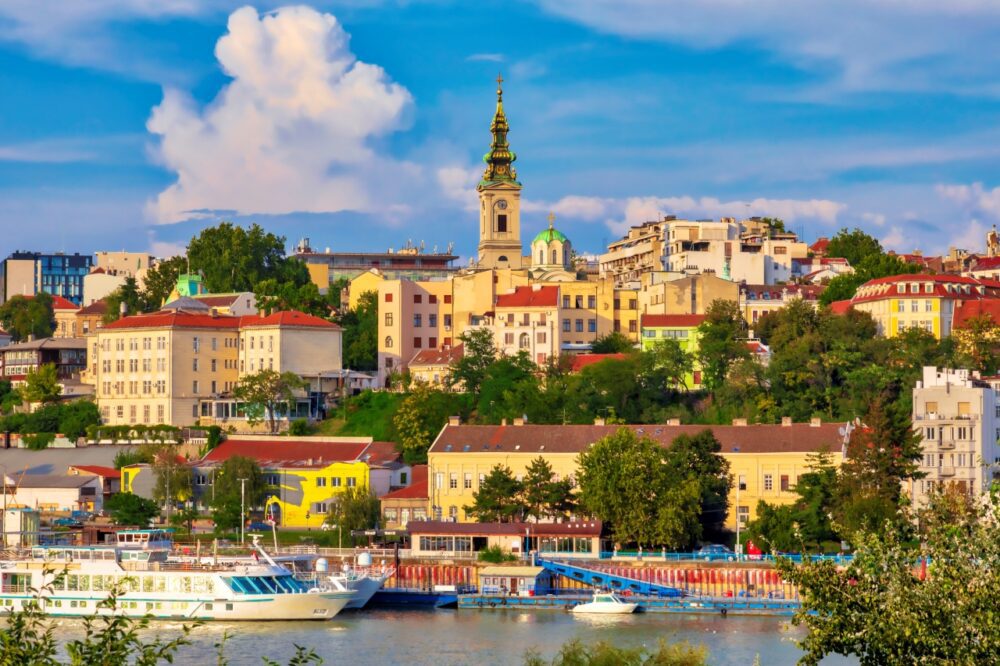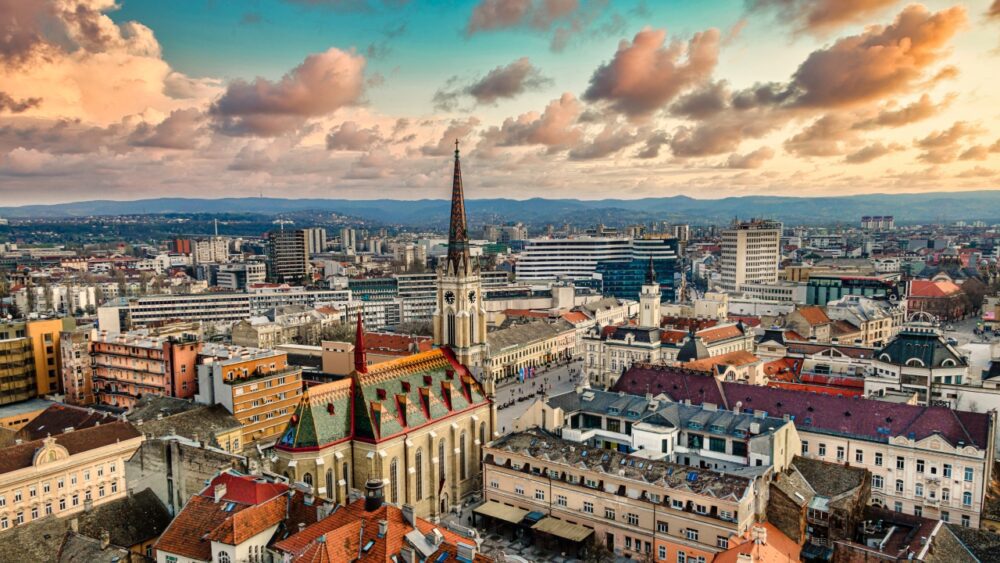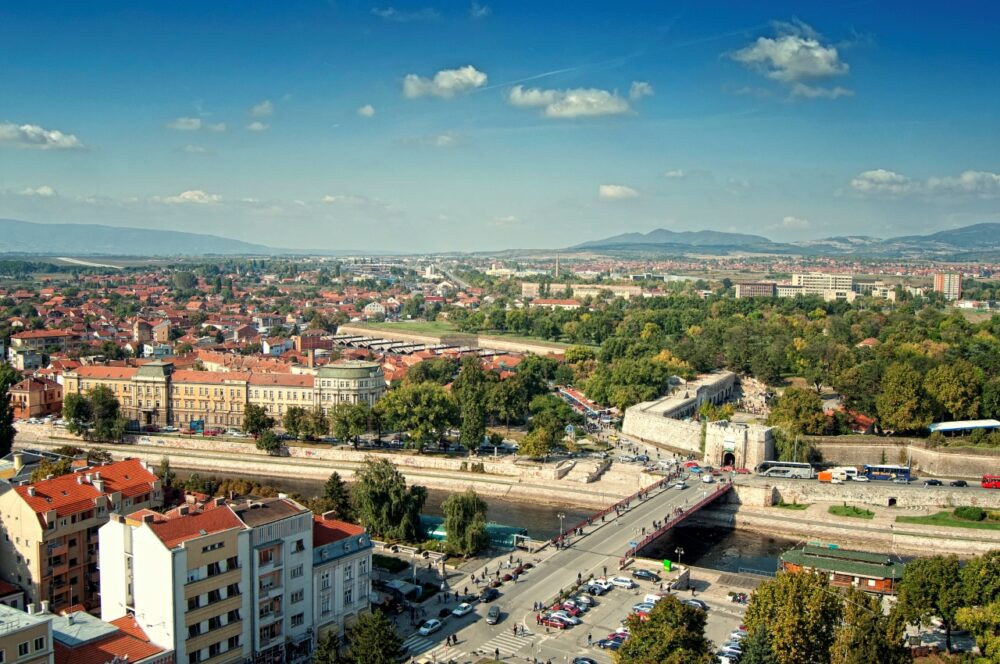
Introduction
Serbia is one of Europe’s best-kept secrets. Nestled in the heart of the Balkans, it’s a country that seamlessly blends history, culture, and stunning natural beauty. When I first visited, I was struck by how much Serbia had to offer, from the vibrant energy of its cities to the peaceful, untouched landscapes of its countryside. Whether you’re exploring ancient fortresses, enjoying a night out in the capital, or hiking through majestic mountain ranges, Serbia has a unique charm that’s hard to resist.
The best part? Serbia is still refreshingly under the radar for many travellers. This means you can experience the richness of its history, food, and landscapes without the crowds (and the prices) you’d encounter in more well-trodden destinations. So, if you’re looking for an adventure that mixes the old with the new, and the urban with the wild, Serbia is your answer.
Table of Contents
Reasons You Should Visit Serbia
1. A Fascinating Blend of Cultures and History
Serbia has a rich and complex history that’s reflected in every corner of the country. Over the centuries, it’s been influenced by the Romans, Ottomans, Habsburgs, and more, making it a fascinating melting pot of cultures. You can feel this in everything from the architecture to the food, and it’s what makes Serbia such a unique destination.
In Belgrade, Serbia’s capital, you’ll see this blend of influences everywhere you look. The Kalemegdan Fortress stands as a symbol of the city’s resilience, overlooking the confluence of the Danube and Sava rivers. Walking through the fortress, I found layers of history—from Roman walls to Ottoman-era buildings—stitched together in a way that feels organic. And Belgrade’s not the only place where history is alive. Nis, one of the oldest cities in Europe, was the birthplace of Roman Emperor Constantine the Great, and its ancient ruins offer a glimpse into the past.
2. A Foodie’s Paradise
If you love good food, Serbia will win you over instantly. The cuisine is hearty, full of flavour, and a delightful mix of Mediterranean and Eastern European influences. Expect generous portions of grilled meats, stews, and fresh salads—often accompanied by homemade rakija, the local fruit brandy.
One dish you can’t leave Serbia without trying is cevapi, small grilled sausages usually served with flatbread, onions, and a creamy cheese spread called kajmak. I had some of the best cevapi in a small tavern in Novi Sad, Serbia’s second-largest city. It was a simple meal, but bursting with flavour. If you’re a fan of street food, try a burek, a pastry filled with meat, cheese, or spinach that’s perfect for a quick snack.
And don’t miss the coffee culture. In Serbia, drinking coffee is a ritual. Cafés are everywhere, and they’re often packed with locals catching up over a strong, rich brew. I spent many afternoons in Belgrade’s Dorcol district, sipping coffee and people-watching—one of the best ways to soak up the local vibe.
3. Vibrant Nightlife and Festivals
Serbia is a country that knows how to have a good time. Whether you’re looking for a laid-back night out or a full-blown party, Serbia’s nightlife won’t disappoint. Belgrade is famous for its floating river clubs, known as splavs, which come alive at night with music and dancing. I spent an unforgettable evening on a splav, sipping cocktails and watching the city lights reflect off the river. The atmosphere is electric, and the energy is contagious.
But it’s not just Belgrade that knows how to throw a party. Novi Sad hosts the EXIT Festival, one of Europe’s biggest and most popular music festivals, attracting thousands of people every summer. Held in the stunning Petrovaradin Fortress, the festival brings together a mix of international and local acts across a range of genres. If you’re a music lover, it’s an event that’s well worth planning your trip around.
For something a bit more traditional, check out one of Serbia’s many folk festivals. In Guca, the annual Trumpet Festival is a wild celebration of Balkan brass music. I went one year, and the sheer joy and energy of the event were unforgettable. The streets were packed with musicians and dancers, and the music didn’t stop until the early hours of the morning.
4. Breathtaking Natural Beauty
Serbia’s cities may be lively, but its countryside offers a different kind of magic. From rolling hills and serene rivers to rugged mountains and national parks, Serbia is a haven for outdoor enthusiasts. Whether you’re into hiking, skiing, or simply soaking up nature, there’s something here for everyone.
One of my favourite places is Zlatibor, a mountainous region in western Serbia that’s perfect for hiking and nature walks. I spent a few days trekking through its forests and meadows, and the peacefulness was unmatched. The air is fresh, the views are stunning, and it’s a great escape from the hustle and bustle of the cities.
If you visit in winter, Kopaonik National Park is a top spot for skiing and snowboarding. It’s Serbia’s largest ski resort, and while it may not have the glitz of the Alps, it’s affordable, friendly, and offers a range of slopes for all levels. In the warmer months, Kopaonik is great for hiking and mountain biking, with trails that offer breathtaking views of the surrounding landscape.
5. Affordability and Authenticity
One of the best things about travelling in Serbia is how affordable it is. Whether you’re on a tight budget or just want to stretch your money further, you’ll find that Serbia offers incredible value for everything from accommodation to dining and activities.
In Cacak, a charming town nestled between mountains and rivers, I found a cosy guesthouse for less than €25 a night, and meals were equally budget-friendly. Even in Belgrade and Novi Sad, I was able to enjoy delicious meals and stay in comfortable accommodation without spending a fortune. Plus, Serbia still feels relatively undiscovered by mass tourism, which means you’ll get a more authentic experience without the tourist traps.
Best Places to Visit in Serbia
1. Belgrade

If you’re visiting Serbia, you’ll likely start in Belgrade, the country’s dynamic capital. This city has a raw energy that I found instantly captivating. The streets are a mix of old and new, where brutalist architecture sits next to Ottoman remnants and trendy cafés. Belgrade has been at the crossroads of history for centuries, and you can feel it as you wander through neighbourhoods like Dorcol or the vibrant Savamala district.
Start your exploration at Kalemegdan Fortress, a sprawling complex that offers fantastic views over the Danube and Sava rivers. It’s the perfect spot for a picnic or a leisurely walk through the surrounding park. From there, head to Knez Mihailova Street, the main pedestrian artery lined with shops, restaurants, and street performers. For a glimpse into Belgrade’s nightlife, you can’t miss the floating river clubs—after a night out on the river, you’ll understand why Belgrade is known as one of Europe’s best party cities.
2. Novi Sad

Just an hour north of Belgrade lies Novi Sad, Serbia’s second-largest city and the cultural heart of the country. The city’s relaxed vibe, stunning architecture, and thriving arts scene make it one of my favourite spots in Serbia. At the centre of it all is the majestic Petrovaradin Fortress, perched on a hill overlooking the Danube. The views from the top are spectacular, and if you’re lucky, you might catch a local artist or musician performing in one of the fortress’s hidden corners.
Novi Sad’s old town is equally charming, with its colourful Austro-Hungarian buildings and lively squares. I loved sitting at one of the outdoor cafés in Liberty Square, sipping on a coffee while watching the world go by. If you’re in town during the summer, be sure to check out the EXIT Festival, which takes place within the walls of Petrovaradin Fortress. It’s one of the best music festivals in Europe, and the location alone makes it worth attending.
3. Nis

Located in southern Serbia, Nis is one of the country’s oldest cities and a fascinating place to visit if you’re interested in history. It’s the birthplace of Constantine the Great, the Roman emperor who founded Constantinople, and the city is filled with ancient ruins and reminders of its Roman past. The highlight for me was visiting the Nis Fortress, a massive structure that has stood the test of time and now serves as a cultural and entertainment hub.
Nis also has a darker side to its history, which you can explore at the Skull Tower, a chilling monument built from the skulls of Serbian rebels during the Ottoman period. It’s a haunting but important reminder of Serbia’s turbulent past. After taking in the history, I spent the evening in Kazandžijsko Sokače, a lively pedestrian street lined with traditional Serbian restaurants. The grilled meats and local wines here are some of the best I’ve had in Serbia.
4. Subotica
Subotica, near the Hungarian border, is one of the most beautiful cities in Serbia, known for its art nouveau architecture and multicultural flair. Walking through the city’s wide boulevards and past its brightly coloured buildings, I felt like I’d stepped into another era. The City Hall is a must-see—its intricate design and vibrant colours make it one of the finest examples of art nouveau architecture in this part of Europe.
One of the highlights of my trip was visiting Palić Lake, just outside Subotica. It’s a peaceful spot where you can rent a bike, go for a swim, or simply relax by the water. The lake has long been a favourite weekend getaway for locals, and it’s easy to see why. It’s also home to an annual film festival, which adds to the city’s cultural vibe.
5. Kragujevac
Kragujevac may not be as well-known as Belgrade or Novi Sad, but it’s a city with a rich history and a strong industrial heritage. It’s home to Serbia’s first university, as well as its first modern factory, which played a significant role in the country’s development. One of the most moving places I visited in Kragujevac was the Sumarice Memorial Park, dedicated to the thousands of civilians who were executed by Nazi forces during World War II. The park is both a sobering and beautiful place to reflect on Serbia’s tragic past.
While Kragujevac is steeped in history, it’s also a lively, modern city with plenty of cafés, restaurants, and cultural events. I found the city’s food scene particularly impressive—don’t leave without trying Šumadijski čaj, a hot drink made from rakija that’s popular in this part of Serbia.
6. Zlatibor
For those seeking natural beauty and outdoor activities, Zlatibor is one of Serbia’s top destinations. Located in the western part of the country, this mountain region is perfect for hiking in the summer and skiing in the winter. I visited in autumn, when the hills were ablaze with colour, and spent a few days hiking through the forests and villages.
One of the highlights of Zlatibor is the Stopića Cave, a vast limestone cave with stunning waterfalls and rock formations. It’s a short drive from the main tourist area and makes for a great day trip. Zlatibor is also known for its traditional wooden houses, and many of them have been turned into guesthouses where you can stay and experience rural Serbian life.
7. Cacak
Cacak, set along the Morava River, is a charming town that serves as a gateway to some of Serbia’s best natural attractions. It’s a great base for exploring the nearby Ovčar-Kablar Gorge, a stunning area known for its hiking trails and monasteries. I took a boat ride along the river and hiked to the top of Mount Kablar, where the views over the gorge were absolutely breathtaking.
The town itself has a relaxed vibe, with a few historical sites to explore, like the Church of Saint George. But what I enjoyed most was the hospitality of the locals—everyone I met was eager to share their recommendations and stories about the area. If you’re looking for a laid-back town with easy access to nature, Cacak is a great option.
8. Vrnjacka Banja
Serbia’s most famous spa town, Vrnjacka Banja, is the place to go if you want to relax and unwind. Known for its thermal springs, the town has been a popular health resort for centuries, and today it’s home to several modern spa centres. I spent a day at one of the local spas, soaking in the mineral-rich waters and indulging in a massage—it was the perfect way to recharge after a week of travelling.
Beyond the spas, Vrnjacka Banja has a lovely park filled with fountains and walking paths. It’s also home to a few interesting historical sites, including the Bridge of Love, where couples leave padlocks as a symbol of their love. The town’s relaxed atmosphere and beautiful surroundings make it a great place to take it easy for a few days.
9. Kopaonik National Park
Kopaonik National Park is Serbia’s premier destination for outdoor adventures. Whether you’re visiting in winter for skiing or in summer for hiking, Kopaonik offers some of the best mountain scenery in the country. I visited in late spring, and the park’s meadows were bursting with wildflowers. The hiking trails here range from easy walks to challenging treks, and the views are nothing short of spectacular.
Kopaonik is also home to Serbia’s largest ski resort, which offers a range of slopes for skiers and snowboarders of all levels. Even if you’re not into skiing, there are plenty of other activities to enjoy, like mountain biking, zip-lining, or simply soaking up the fresh mountain air. After a day of exploring, I recommend relaxing at one of the park’s many mountain lodges, where you can warm up by the fire with a hot drink.
Travel Tips for Serbia
Getting Around Serbia
Serbia has a reliable network of buses and trains connecting major cities like Belgrade, Novi Sad, and Niš. Buses are generally faster and more frequent than trains, especially for routes to smaller towns. Taxis are affordable in cities, but always insist on using the meter or agree on a price beforehand. Renting a car is ideal if you want to explore rural areas like the Tara National Park or drive along the scenic Danube River, though be prepared for occasional narrow or winding roads in the countryside.
Best Time to Visit Serbia
The best time to visit Serbia is during spring (April to June) and autumn (September to October), when the weather is pleasant, and popular sites aren’t overcrowded. These seasons are great for exploring cities and enjoying Serbia’s countryside. Summer (July to August) is warm and lively, with plenty of festivals like EXIT in Novi Sad, though it can get hot in the cities. Winter (December to February) is ideal for skiing in Kopaonik or experiencing Serbia’s cosy cafés, but be ready for cold temperatures.
Passport and Visa Requirements for Serbia
Visitors from the EU, US, UK, Canada, and Australia can enter Serbia visa-free for up to 90 days. Your passport should be valid for at least six months beyond your intended stay. Serbia is not part of the Schengen Area, so travellers planning to visit neighbouring Schengen countries like Hungary or Croatia will need to follow separate visa requirements for those destinations. Always check your visa requirements before travelling, especially if you plan to cross multiple borders.
Currency and Banks in Serbia
Serbia uses the Serbian Dinar (RSD), and while credit cards are widely accepted in cities and larger towns, you’ll need cash for smaller purchases, markets, and in rural areas. ATMs are available in cities and tourist areas, but it’s wise to carry some cash when travelling off the beaten path. Be cautious when exchanging money at airports or tourist spots, as the rates can be less favourable—using ATMs or bank exchange offices is usually better. Tipping in restaurants is common, with 5-10% being the usual amount.
Language and Useful Phrases to Know
The official language is Serbian, which uses both the Cyrillic and Latin alphabets. English is widely spoken in cities and tourist areas, especially among younger people, but learning a few basic Serbian phrases will be appreciated. Try “Zdravo” (hello), “Hvala” (thank you), and “Molim” (please). In rural areas, people may speak less English, so having some Serbian ready is helpful. You’ll often see signs in both Cyrillic and Latin scripts, so it’s useful to familiarise yourself with Cyrillic letters.
Budgeting and Costs for Serbia
Serbia is one of Europe’s more affordable destinations. Accommodation, food, and transport are reasonably priced, especially outside of Belgrade. Local restaurants and kafanas offer great value, serving hearty Serbian meals like ćevapi and pljeskavica at budget-friendly prices. Public transport and intercity buses are cheap and efficient. To save even more, consider visiting in the shoulder seasons (spring and autumn), when prices for accommodation and flights are lower than in peak summer. Many outdoor activities, like hiking and exploring national parks, are free to enjoy.
Conclusion
Serbia is a country that defies expectations. From the lively streets of Belgrade to the peaceful mountains of Zlatibor, there’s something here for every kind of traveller. It’s a place where history and modernity meet, where natural beauty is never far away, and where the food, people, and culture make you feel right at home.
If you’re looking for a destination that combines adventure, culture, and relaxation—without the high prices and tourist crowds of more popular spots—Serbia is the place to go. Whether you’re drawn to its vibrant cities, its rich history, or its stunning landscapes, Serbia will leave you with memories that last long after your trip has ended.
